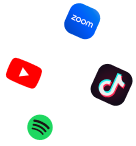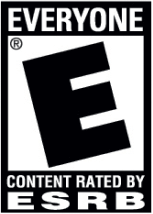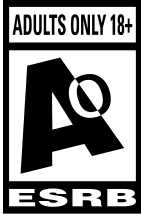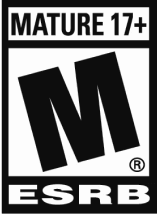Google Play App Content Rating Statistics 2025
At 42matters, we track content rating insights for Android apps available on Google Play. This includes Google Play's native content rating system, as well as global systems like PEGI, USK, ESRB, ACB, ClassInd, IARC, and GRAC.
This article provides Google Play app content rating statistics updated in near real-time. It defines the various global systems and covers a number of content rating use cases for Ad Networks, parental control apps, and more.
Data Source: 42matters
At 42matters, we take a holistic approach to mobile and connected TV (CTV) app intelligence. We track app metadata, performance metrics, technical specifications, strategic insights, and more. If you would like to leverage our data for your own products, processes, or research, you can access it via our APIs, File Dumps, Explorer, and SDK Explorer.
Contact Sales
How Do Android Apps Receive Content Ratings on Google Play?
In order for an app to receive a content rating on Google Play, developers must fill out a rating questionnaire on the Play Console that inquires about the nature of the app’s content. An app’s rating will depend on how these questions, which were developed by the IARC, are answered.
According to the Google Play content rating system guidelines, Android developers are responsible for completing content rating questionnaires for new apps submitted on the Play Console, existing apps that are active on Google Play, and all app updates where there has been a change to app content or features that would affect the responses to the questionnaire. To benefit users, Google recommends that developers use the assigned rating when advertising their app in each respective region.
To keep developers honest, it is the prerogative of rating authorities participating in IARC to change an app's rating after a review of its content. In other words, if a rating authority finds an apparent discrepancy between an app’s content and its rating, it can override the app’s questionnaire-generated score. In the event that an app rating is overridden, developers can re-complete the content rating questionnaire.
Additionally, developers may need to receive a content rating from other rating authorities depending on the regional availability of their apps. The methodologies applied by these third-party rating authorities vary, as do the rating standards inherent to the countries and regions they serve. As such, regional ratings assigned to specific apps may vary accordingly.
USK App Content Rating Statistics for Google Play
While the USK offers a wide range of services for developers, publishers, and content providers selling into German markets, they are best known for the classification of games, apps, online content, trade fairs, and events.
They rate content for Google Play, the Nintendo eShop, Microsoft Windows Store, Xbox Store, and the Oculus Store. Similar to ESRB and PEGI, USK relies on the IARC methodology to rate mobile apps and games. To guarantee consistent quality the USK monitors these classifications via procedure-specific means.
USK
Age Rating
ACB App Content Rating Statistics for Google Play
The Australian Classification Board is responsible for the classification of films, computer games, and publications sold and distributed across Australia.
They place content in the following categories: General, 3+, 7+, 12+, 16+, 18+, PG, Restricted 15+, Restricted 18+, Mature, Unrated.
Australian Classification Board
Age Rating
IARC App Content Rating Statistics for Google Play
The International Age Rating Coalition (IARC) provides a globally streamlined age classification process for digital games and mobile apps. Their mission is to ensure that digital consumers have consistent access to trusted, well-established age ratings across gaming platforms.
IARC simplifies the age rating process by reducing it to a single set of questions that developers must answer about their products' content and interactive elements. identifying apps that collect and share location or personal information, enable user interaction, share user-generated content, or offer in-app digital purchases.
The IARC's rating system is currently deployed by rating authorities which serve approximately 1.5 billion people. It incorporates the distinct content criteria and standards for each participating territory. The IARC developed their system through close collaboration with participating rating authorities, game makers, and digital storefronts.
IARC
Age Rating
Looking for More App Content Ratings Insights?
To help businesses harness the full potential of mobile app and game content ratings, we at 42matters provide a file dump of app content ratings by country for all apps available on Google Play and the Apple App Store.
Our data includes details on regional and global content ratings, including those from ESRB in the Americas, PEGI in Europe and the Middle East, USK in Germany, the Australian Classification Board, ClassInd in Brazil, GRAC in South Korea, IARC, and Apple.
The 42matters content ratings file dump is compatible with parental control apps and facilitates intelligent ad targeting for developers and Ad Tech businesses. It comes as a single gzipped file with line delimited JSON and has the following characteristics:
- Each line is a valid JSON object
- UTF-8 encoding
- Line separator is '\n'
For more information about our content ratings file dump, see here or contact our team.
Talk to SalesHow Ad Networks Can Use App Content Ratings
When online advertising networks onboard mobile applications to prepare them for serving ads, they need as much information about the apps as possible to make sure they serve highly relevant ads that generate clicks. 42matters’ content ratings file dump is a handy tool for refining this process as it delivers valuable maturity insights into the core audiences of every app available on Google Play and the Apple App Store.
Indeed, determining audience maturity is critical. Both app publishers and brands alike are highly concerned with their reputations, so ad networks must be able to provide ad experiences that align with the brand safety goals of their customers.
To this end, app content ratings enable ad networks to infer whether ads might be more or less likely to trigger a click or lead to a negative review. The better an ad network is able to classify apps in this way, the better they are able to target ads. In turn, this fosters customer loyalty by boosting the return on investment (ROI) ad networks are able to provide.
Of course, the unhappy inverse is true as well. If an ad network inadequately vets app audiences, and serves ads that negatively impact user experience, app publishers will be disinclined to continue working with them. Likewise, if brands find that they are advertising to disinterested audiences, they will not realize any substantial ROI for their mobile advertising activity.
For more information about how 42matters can help ad networks improve the value of their offerings, check out these blogs:
How App Recommender Systems Can Use App Content Ratings
Recommender systems, such as the one used by Netflix to suggest new shows to viewers, seek to predict whether users will be interested in certain items or pieces of content. App recommender systems are therefore aimed at recommending new apps to users based on their profile, app history, and other such indicators.
42matters' app content ratings file dump can help recommender systems improve their accuracy by providing insight into the core audiences of every app available on both major app stores.
Get Even More Mobile App Market Intelligence!
The 42matters Explorer enables you to browse the global app market, with insight into publisher details, app metadata, performance metrics, technical insights, and more.
Our suite of APIs, file dumps, and other app and SDK intelligence tools can help you dig even deeper, with intelligence compiled from 12 leading mobile and connected TV (CTV) app stores, including Google Play, the Apple App Store, Amazon Appstore, Huawei AppGallery, Tencent App Store, Roku, Apple TV, Fire TV, Google TV, Samsung Smart TV Apps, the LG Content Store, and Vizio SmartCast Apps.
To learn more, set up a demo with our app market experts!







